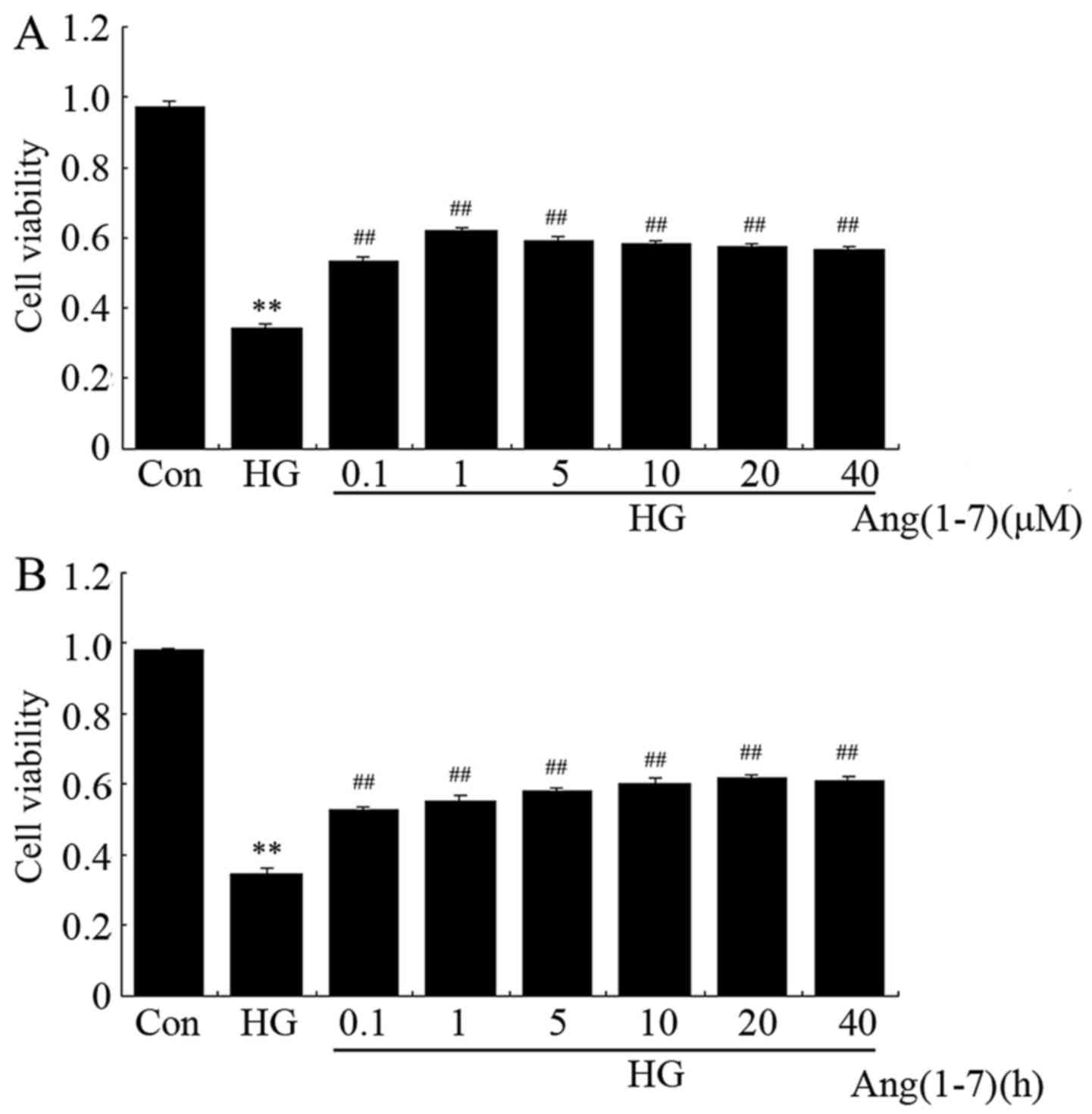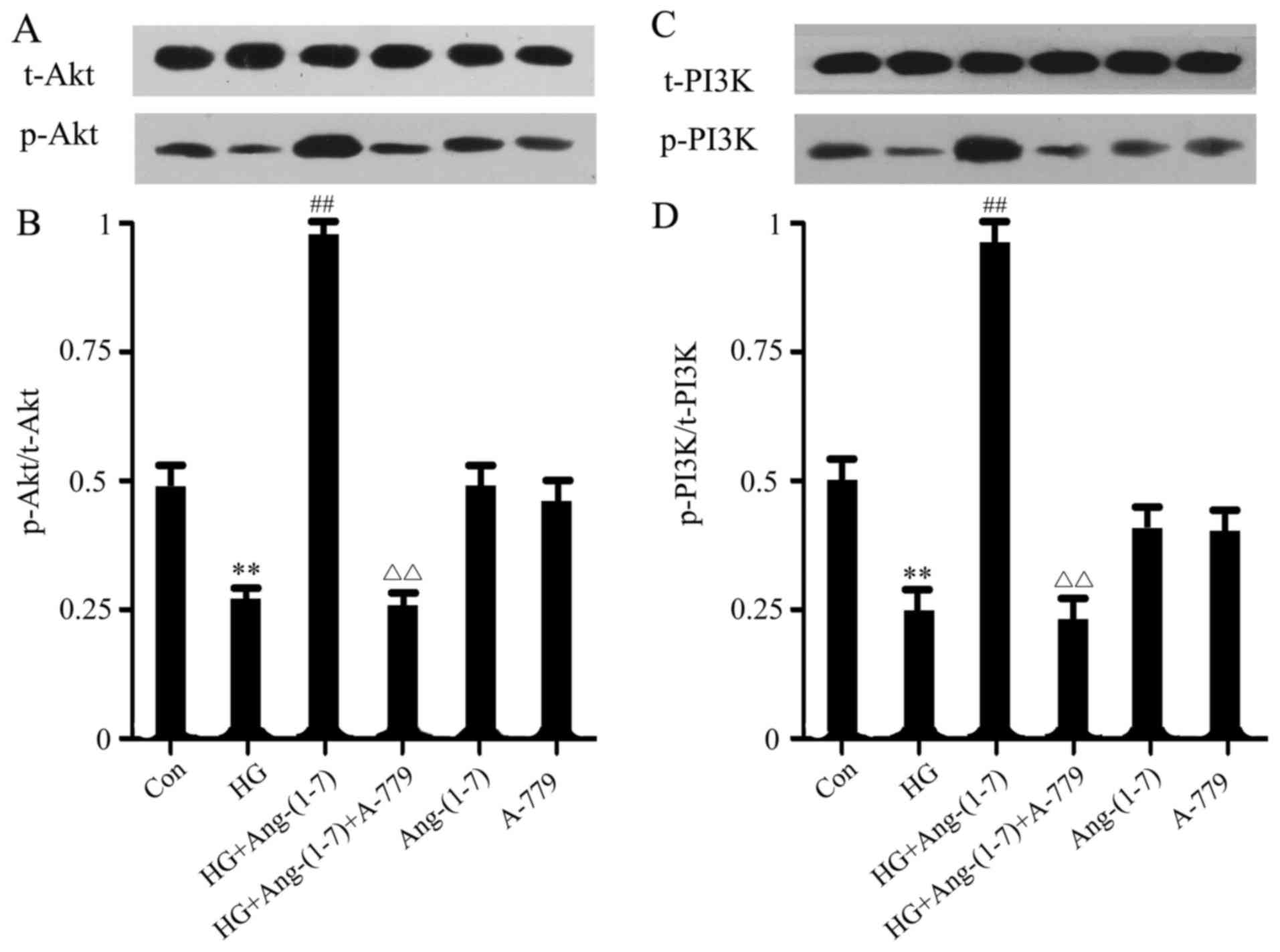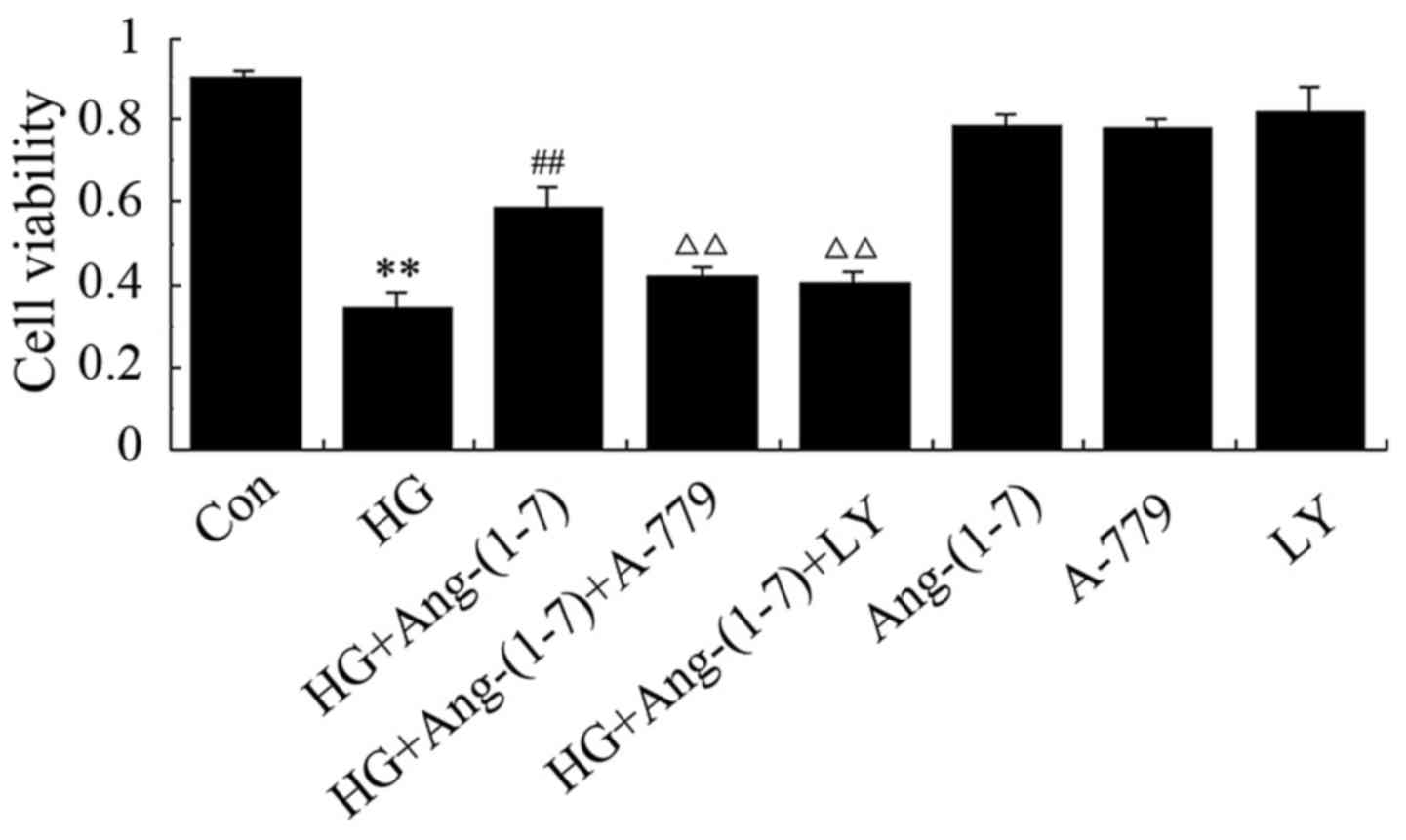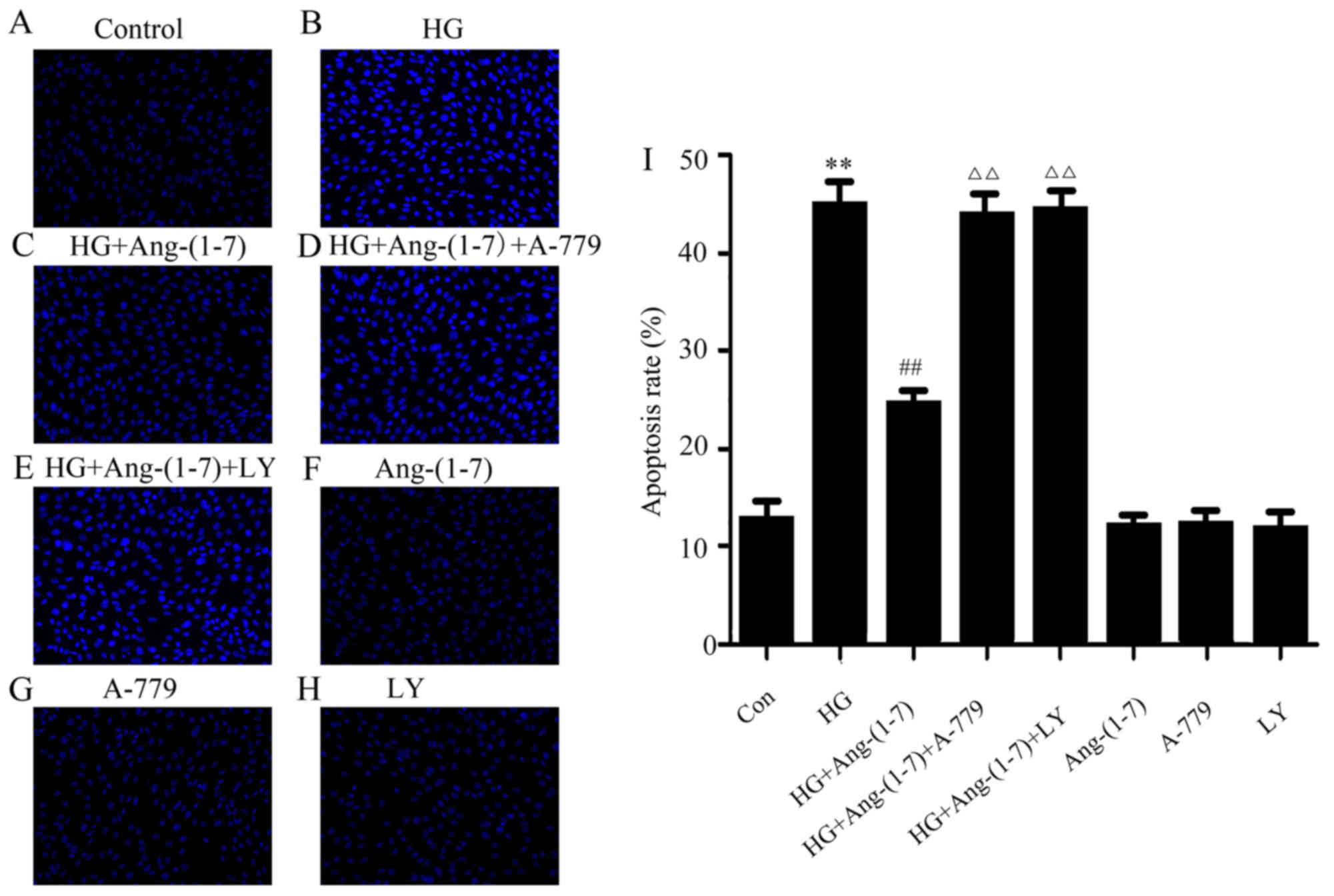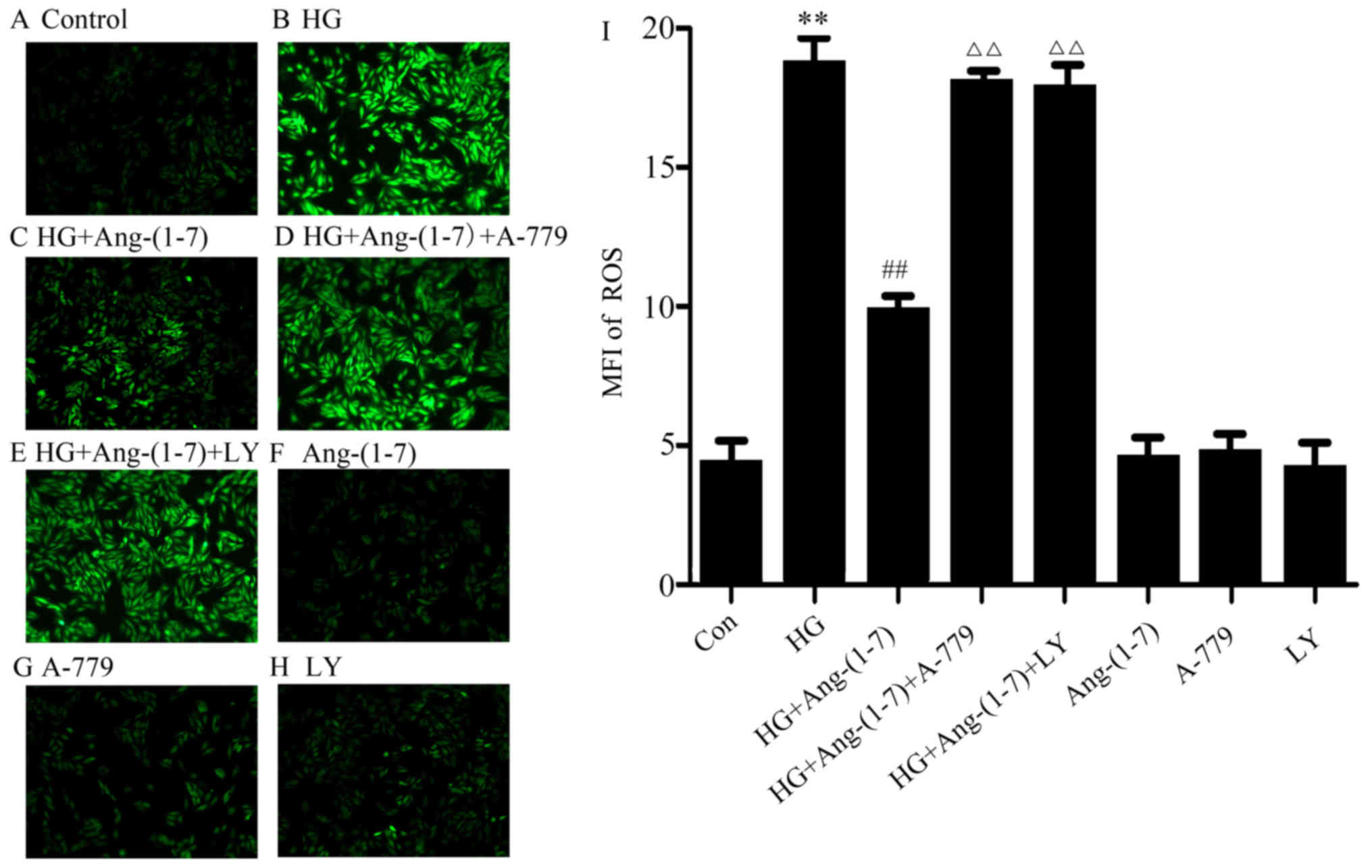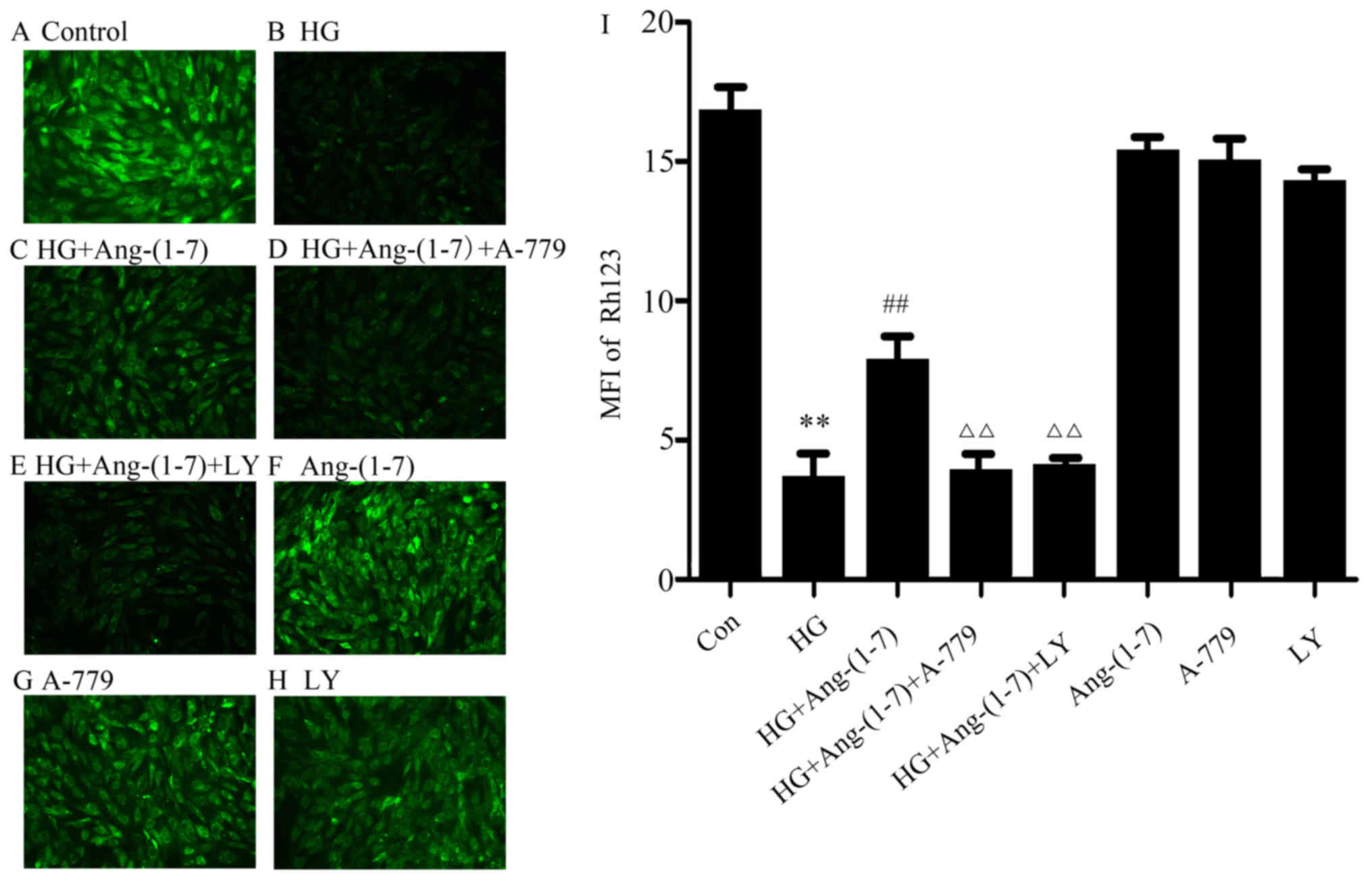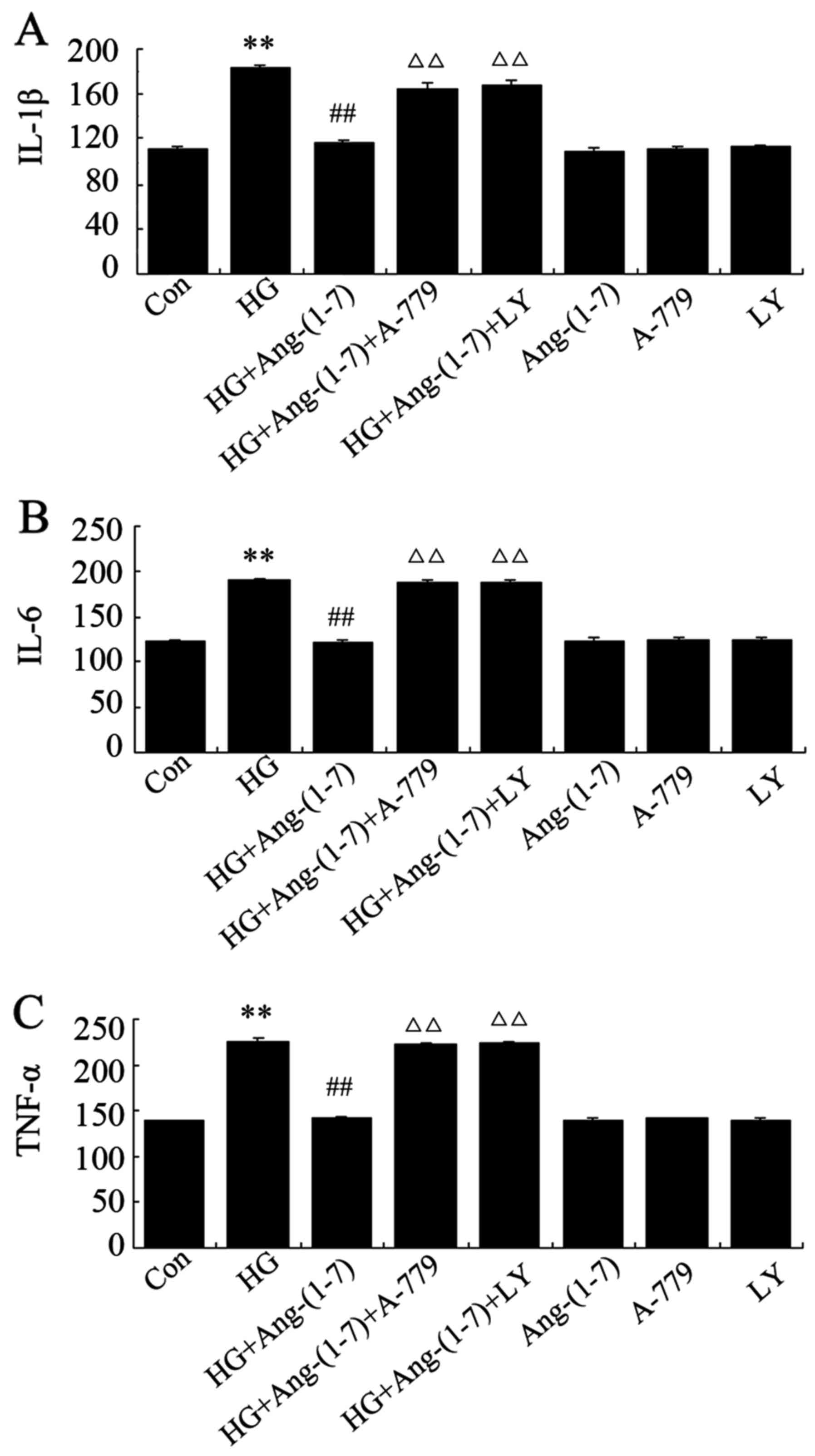|
1
|
Hu FB, Satija A and Manson JE: Curbing the
diabetes pandemic: the need for global policy solutions. JAMA.
313:2319–2320. 2015. View Article : Google Scholar : PubMed/NCBI
|
|
2
|
Rahman S, Rahman T, Ismail AA and Rashid
AR: Diabetes-associated macrovasculopathy: pathophysiology and
pathogenesis. Diabetes Obes Metab. 9:767–780. 2007. View Article : Google Scholar : PubMed/NCBI
|
|
3
|
Campos C: Chronic hyperglycemia and
glucose toxicity: pathology and clinical sequelae. Postgrad Med.
124:90–97. 2012. View Article : Google Scholar
|
|
4
|
Tabák AG, Herder C, Rathmann W, Brunner EJ
and Kivimäki M: Prediabetes: a high-risk state for diabetes
development. Lancet. 379:2279–2290. 2012. View Article : Google Scholar : PubMed/NCBI
|
|
5
|
Arora MK and Singh UK: Molecular
mechanisms in the pathogenesis of diabetic nephropathy: an update.
Vascul Pharmacol. 58:259–271. 2013. View Article : Google Scholar : PubMed/NCBI
|
|
6
|
Nguyen DV, Shaw LC and Grant MB:
Inflammation in the pathogenesis of microvascular complications in
diabetes. Front Endocrinol (Lausanne). 3:1702012.
|
|
7
|
Chavali V, Tyagi SC and Mishra PK:
Predictors and prevention of diabetic cardiomyopathy. Diabetes
Metab Syndr Obes. 6:151–160. 2013.PubMed/NCBI
|
|
8
|
Gao X, Xu Y, Xu B, Liu Y, Cai J, Liu HM,
Lei S, Zhong YQ, Irwin MG and Xia Z: Allopurinol attenuates left
ventricular dysfunction in rats with early stages of
streptozotocin-induced diabetes. Diabetes Metab Res Rev.
28:409–417. 2012. View Article : Google Scholar : PubMed/NCBI
|
|
9
|
Huynh K, Bernardo BC, McMullen JR and
Ritchie RH: Diabetic cardiomyopathy: mechanisms and new treatment
strategies targeting antioxidant signaling pathways. Pharmacol
Ther. 142:375–415. 2014. View Article : Google Scholar : PubMed/NCBI
|
|
10
|
Goyal BR and Mehta AA: Diabetic
cardiomyopathy: pathophysiological mechanisms and cardiac
dysfuntion. Hum Exp Toxicol. 32:571–590. 2013. View Article : Google Scholar
|
|
11
|
Ren J and Davidoff AJ: Diabetes rapidly
induces contractile dysfunctions in isolated ventricular myocytes.
Am J Physiol. 272:H148–H158. 1997.PubMed/NCBI
|
|
12
|
Tarquini R, Lazzeri C, Pala L, Rotella CM
and Gensini GF: The diabetic cardiomyopathy. Acta Diabetol.
48:173–181. 2011. View Article : Google Scholar
|
|
13
|
Chen J, Guo R, Yan H, Tian L, You Q, Li S,
Huang R and Wu K: Naringin inhibits ROS-activated MAPK pathway in
high glucose-induced injuries in H9c2 cardiac cells. Basic Clin
Pharmacol Toxicol. 114:293–304. 2014. View Article : Google Scholar
|
|
14
|
Kamalakkannan N and Prince PS:
Antihyperglycaemic and antioxidant effect of rutin, a polyphenolic
flavonoid, in streptozotocin-induced diabetic wistar rats. Basic
Clin Pharmacol Toxicol. 98:97–103. 2006. View Article : Google Scholar : PubMed/NCBI
|
|
15
|
Privratsky JR, Wold LE, Sowers JR, Quinn
MT and Ren J: AT1 blockade prevents glucose-induced cardiac
dysfunction in ventricular myocytes: role of the AT1 receptor and
NADPH oxidase. Hypertension. 42:206–212. 2003. View Article : Google Scholar : PubMed/NCBI
|
|
16
|
Peake BF, Nicholson CK, Lambert JP, Hood
RL, Amin H, Amin S and Calvert JW: Hydrogen sulfide preconditions
the db/db diabetic mouse heart against ischemia-reperfusion injury
by activating Nrf2 signaling in an Erk-dependent manner. Am J
Physiol Heart Circ Physiol. 304:H1215–H1224. 2013. View Article : Google Scholar : PubMed/NCBI
|
|
17
|
Murali R, Karthikeyan A and Saravanan R:
Protective effects of D-limonene on lipid peroxidation and
antioxidant enzymes in streptozotocin-induced diabetic rats. Basic
Clin Pharmacol Toxicol. 112:175–181. 2013. View Article : Google Scholar
|
|
18
|
Saandeep K, Vikram A, Tripathi DN, Ramarao
P and Jena G: Influence of hyperglycaemia on chemical-induced
toxicity: study with cyclophosphamide in rat. Basic Clin Pharmacol
Toxicol. 105:236–242. 2009. View Article : Google Scholar : PubMed/NCBI
|
|
19
|
Maritim AC, Sanders RA and Watkins JB III:
Diabetes, oxidative stress, and antioxidants: a review. J Biochem
Mol Toxicol. 17:24–38. 2003. View Article : Google Scholar : PubMed/NCBI
|
|
20
|
Ashour M, Al-Kattan K, Rafay MA, Saja KF,
Hajjar W and Al-Fraye AR: Current surgical therapy for
bronchiectasis. World J Surg. 23:1096–1104. 1999. View Article : Google Scholar : PubMed/NCBI
|
|
21
|
Ceriello A: Cardiovascular effects of
acute hyperglycaemia: pathophysiological underpinnings. Diab Vasc
Dis Res. 5:260–268. 2008. View Article : Google Scholar : PubMed/NCBI
|
|
22
|
Boudina S, Sena S, Theobald H, Sheng X,
Wright JJ, Hu XX, Aziz S, Johnson JI, Bugger H, Zaha VG, et al:
Mitochondrial energetics in the heart in obesity-related diabetes:
direct evidence for increased uncoupled respiration and activation
of uncoupling proteins. Diabetes. 56:2457–2466. 2007. View Article : Google Scholar : PubMed/NCBI
|
|
23
|
Westermann D, Van Linthout S, Dhayat S,
Dhayat N, Schmidt A, Noutsias M, Song XY, Spillmann F, Riad A,
Schultheiss HP, et al: Tumor necrosis factor-alpha antagonism
protects from myocardial inflammation and fibrosis in experimental
diabetic cardiomyopathy. Basic Res Cardiol. 102:500–507. 2007.
View Article : Google Scholar : PubMed/NCBI
|
|
24
|
Di Filippo C, Marfella R, Cuzzocrea S,
Piegari E, Petronella P, Giugliano D, Rossi F and D’Amico M:
Hyperglycemia in strep-tozotocin-induced diabetic rat increases
infarct size associated with low levels of myocardial HO-1 during
ischemia/reperfusion. Diabetes. 54:803–810. 2005. View Article : Google Scholar : PubMed/NCBI
|
|
25
|
Venkatachalam K, Mummidi S, Cortez DM,
Prabhu SD, Valente AJ and Chandrasekar B: Resveratrol inhibits high
glucose-induced PI3K/Akt/ERK-dependent interleukin-17 expression in
primary mouse cardiac fibroblasts. Am J Physiol Heart Circ Physiol.
294:H2078–H2087. 2008. View Article : Google Scholar : PubMed/NCBI
|
|
26
|
Manukyan MC, Weil BR, Wang Y, Abarbanell
AM, Herrmann JL, Poynter JA and Meldrum DR: The phosphoinositide-3
kinase survival signaling mechanism in sepsis. Shock. 34:442–449.
2010. View Article : Google Scholar : PubMed/NCBI
|
|
27
|
Katare RG, Caporali A, Oikawa A, Meloni M,
Emanueli C and Madeddu P: Vitamin B1 analog benfotiamine prevents
diabetes-induced diastolic dysfunction and heart failure through
Akt/Pim-1-mediated survival pathway. Circ Heart Fail. 3:294–305.
2010. View Article : Google Scholar : PubMed/NCBI
|
|
28
|
Sun D, Shen M, Li J, Li W, Zhang Y, Zhao
L, Zhang Z, Yuan Y, Wang H and Cao F: Cardioprotective effects of
tanshinone IIA pretreatment via kinin B2 receptor-Akt-GSK-3β
dependent pathway in experimental diabetic cardiomyopathy.
Cardiovasc Diabetol. 10:42011. View Article : Google Scholar
|
|
29
|
Yu W, Wu J, Cai F, Xiang J, Zha W, Fan D,
Guo S, Ming Z and Liu C: Curcumin alleviates diabetic
cardiomyopathy in experimental diabetic rats. PLoS One.
7:e520132012. View Article : Google Scholar : PubMed/NCBI
|
|
30
|
Tsai CY, Wang CC, Lai TY, Tsu HN, Wang CH,
Liang HY and Kuo WW: Antioxidant effects of diallyl trisulfide on
high glucose-induced apoptosis are mediated by the
PI3K/Akt-dependent activation of Nrf2 in cardiomyocytes. Int J
Cardiol. 168:1286–1297. 2013. View Article : Google Scholar : PubMed/NCBI
|
|
31
|
Jadhav A, Tiwari S, Lee P and Ndisang JF:
The heme oxygenase system selectively enhances the
anti-inflammatory macrophage-M2 phenotype, reduces pericardial
adiposity, and ameliorated cardiac injury in diabetic
cardiomyopathy in Zucker diabetic fatty rats. J Pharmacol Exp Ther.
345:239–249. 2013. View Article : Google Scholar : PubMed/NCBI
|
|
32
|
Tipnis SR, Hooper NM, Hyde R, Karran E,
Christie G and Turner AJ: A human homolog of angiotensin-converting
enzyme. Cloning and functional expression as a
captopril-insensitive carboxypeptidase. J Biol Chem.
275:33238–33243. 2000. View Article : Google Scholar : PubMed/NCBI
|
|
33
|
Reudelhuber TL: The renin-angiotensin
system: peptides and enzymes beyond angiotensin II. Curr Opin
Nephrol Hypertens. 14:155–159. 2005. View Article : Google Scholar : PubMed/NCBI
|
|
34
|
Santos RA, Ferreira AJ, Pinheiro SV,
Sampaio WO, Touyz R and Campagnole-Santos MJ: Angiotensin-(1-7) and
its receptor as a potential targets for new cardiovascular drugs.
Expert Opin Investig Drugs. 14:1019–1031. 2005. View Article : Google Scholar : PubMed/NCBI
|
|
35
|
Gomes ER, Lara AA, Almeida PW, Guimarães
D, Resende RR, Campagnole-Santos MJ, Bader M, Santos RA and
Guatimosim S: Angiotensin-(1-7) prevents cardiomyocyte pathological
remodeling through a nitric oxide/guanosine 3′,5′-cyclic
mono-phosphate-dependent pathway. Hypertension. 55:153–160. 2010.
View Article : Google Scholar
|
|
36
|
Sukumaran V, Veeraveedu PT, Gurusamy N,
Lakshmanan AP, Yamaguchi K, Ma M, Suzuki K, Kodama M and Watanabe
K: Telmisartan acts through the modulation of ACE-2/ANG 1-7/mas
receptor in rats with dilated cardiomyopathy induced by
experimental autoimmune myocarditis. Life Sci. 90:289–300. 2012.
View Article : Google Scholar : PubMed/NCBI
|
|
37
|
Giani JF, Muñoz MC, Mayer MA, Veiras LC,
Arranz C, Taira CA, Turyn D, Toblli JE and Dominici FP:
Angiotensin-(1-7) improves cardiac remodeling and inhibits
growth-promoting pathways in the heart of fructose-fed rats. Am J
Physiol Heart Circ Physiol. 298:H1003–H1013. 2010. View Article : Google Scholar : PubMed/NCBI
|
|
38
|
Iwata M, Cowling RT, Gurantz D, Moore C,
Zhang S, Yuan JX and Greenberg BH: Angiotensin-(1-7) binds to
specific receptors on cardiac fibroblasts to initiate antifibrotic
and antitrophic effects. Am J Physiol Heart Circ Physiol.
289:H2356–H2363. 2005. View Article : Google Scholar : PubMed/NCBI
|
|
39
|
Grobe JL, Mecca AP, Mao H and Katovich MJ:
Chronic angiotensin-(1-7) prevents cardiac fibrosis in DOCA-salt
model of hypertension. Am J Physiol Heart Circ Physiol.
290:H2417–H2423. 2006. View Article : Google Scholar : PubMed/NCBI
|
|
40
|
Patel VB, Mori J, McLean BA, Basu R, Das
SK, Ramprasath T, Parajuli N, Penninger JM, Grant MB, Lopaschuk GD,
et al: ACE2 deficiency worsens epicardial adipose tissue
inflammation and cardiac dysfunction in response to diet-induced
obesity. Diabetes. 65:85–95. 2016.
|
|
41
|
Dias-Peixoto MF, Santos RA, Gomes ER,
Alves MN, Almeida PW, Greco L, Rosa M, Fauler B, Bader M, Alenina
N, et al: Molecular mechanisms involved in the
angiotensin-(1-7)/Mas signaling pathway in cardiomyocytes.
Hypertension. 52:542–548. 2008. View Article : Google Scholar : PubMed/NCBI
|
|
42
|
Giani JF, Gironacci MM, Muñoz MC, Peña C,
Turyn D and Dominici FP: Angiotensin-(1-7) stimulates the
phosphorylation of JAK2, IRS-1 and Akt in rat heart in vivo: role
of the AT1 and Mas receptors. Am J Physiol Heart Circ Physiol.
293:H1154–H1163. 2007. View Article : Google Scholar : PubMed/NCBI
|
|
43
|
Shah A, Gul R, Yuan K, Gao S, Oh YB, Kim
UH and Kim SH: Angiotensin-(1-7) stimulates high atrial
pacing-induced ANP secretion via Mas/PI3-kinase/Akt axis and
Na+/H+ exchanger. Am J Physiol Heart Circ
Physiol. 298:H1365–H1374. 2010. View Article : Google Scholar : PubMed/NCBI
|
|
44
|
Liang W, Chen J, Mo L, Ke X, Zhang W,
Zheng D, Pan W, Wu S, Feng J, Song M and Liao X: ATP-sensitive
K+ channels contribute to the protective effects of
exogenous hydrogen sulfide against high glucose-induced injury in
H9c2 cardiac cells. Int J Mol Med. 37:763–772. 2016. View Article : Google Scholar : PubMed/NCBI
|
|
45
|
Latz E, Xiao TS and Stutz A: Activation
and regulation of the inflammasomes. Nat Rev Immunol. 13:397–411.
2013. View Article : Google Scholar : PubMed/NCBI
|
|
46
|
Mezzaroma E, Toldo S, Farkas D, Seropian
IM, Van Tassell BW, Salloum FN, Kannan HR, Menna AC, Voelkel NF and
Abbate A: The inflammasome promotes adverse cardiac remodeling
following acute myocardial infarction in the mouse. Proc Natl Acad
Sci USA. 108:19725–19730. 2011. View Article : Google Scholar : PubMed/NCBI
|
|
47
|
Kerr LE, McGregor AL, Amet LE, Asada T,
Spratt C, Allsopp TE, Harmar AJ, Shen S, Carlson G, Logan N, et al:
Mice overexpressing human caspase 3 appear phenotypically normal
but exhibit increased apoptosis and larger lesion volumes in
response to transient focal cerebral ischaemia. Cell Death Differ.
11:1102–1111. 2004. View Article : Google Scholar : PubMed/NCBI
|
|
48
|
Campagnole-Santos MJ, Diz DI, Santos RA,
Khosla MC, Brosnihan KB and Ferrario CM: Cardiovascular effects of
angiotensin-(1-7) injected into the dorsal medulla of rats. Am J
Physiol. 257:H324–H329. 1989.PubMed/NCBI
|
|
49
|
Olivon VC, Aires RD, Santiago LB, Ramalho
LZ, Cortes SF and Lemos VS: Mas receptor overexpression increased
Ang-(1-7) relaxation response in renovascular hypertensive rat
carotid. Peptides. 71:250–258. 2015. View Article : Google Scholar : PubMed/NCBI
|
|
50
|
Souza AP, Sobrinho DB, Almeida JF, Alves
GM, Macedo LM, Porto JE, Vêncio EF, Colugnati DB, Santos RA,
Ferreira AJ, et al: Angiotensin II type 1 receptor blockade
restores angiotensin-(1-7)-induced coronary vasodilation in
hypertrophic rat hearts. Clin Sci (Lond). 125:449–459. 2013.
View Article : Google Scholar
|
|
51
|
Santos SH, Giani JF, Burghi V, Miquet JG,
Qadri F, Braga JF, Todiras M, Kotnik K, Alenina N, Dominici FP, et
al: Oral administration of angiotensin-(1-7) ameliorates type 2
diabetes in rats. J Mol Med Berl. 92:255–265. 2014. View Article : Google Scholar
|
|
52
|
Hao PP, Yang JM, Zhang MX, Zhang K, Chen
YG, Zhang C and Zhang Y: Angiotensin-(1-7) treatment mitigates
right ventricular fibrosis as a distinctive feature of diabetic
cardiomyopathy. Am J Physiol Heart Circ Physiol. 308:H1007–H1019.
2015. View Article : Google Scholar : PubMed/NCBI
|
|
53
|
Liao X, Wang L, Yang C, He J, Wang X, Guo
R, Lan A, Dong X, Yang Z, Wang H, et al: Cyclooxygenase mediates
cardioprotection of angiotensin-(1-7) against
ischemia/reperfusion-induced injury through the inhibition of
oxidative stress. Mol Med Rep. 4:1145–1150. 2011.PubMed/NCBI
|
|
54
|
Suski M, Olszanecki R, Stachowicz A, Madej
J, Bujak-Giżycka B, Okoń K and Korbut R: The influence of
angiotensin-(1-7) Mas receptor agonist (AVE 0991) on mitochondrial
proteome in kidneys of apoE knockout mice. Biochim Biophys Acta.
1834:2463–2469. 2013. View Article : Google Scholar : PubMed/NCBI
|
|
55
|
Papinska AM, Mordwinkin NM, Meeks CJ,
Jadhav SS and Rodgers KE: Angiotensin-(1-7) administration benefits
cardiac, renal and progenitor cell function in db/db mice. Br J
Pharmacol. 172:4443–4453. 2015. View Article : Google Scholar :
|
|
56
|
Hausenloy DJ and Yellon DM: New directions
for protecting the heart against ischaemia-reperfusion injury:
targeting the reperfusion injury salvage kinase (RISK)-pathway.
Cardiovasc Res. 61:448–460. 2004. View Article : Google Scholar : PubMed/NCBI
|
|
57
|
Wang J, Ji SY, Liu SZ, Jing R and Lou WJ:
Cardioprotective effect of breviscapine: inhibition of apoptosis in
H9c2 cardiomyocytes via the PI3K/Akt/eNOS pathway following
simulated ischemia/reperfusion injury. Pharmazie. 70:593–597.
2015.PubMed/NCBI
|
|
58
|
Lakshmanan AP, Harima M, Suzuki K,
Soetikno V, Nagata M, Nakamura T, Takahashi T, Sone H, Kawachi H
and Watanabe K: The hyperglycemia stimulated myocardial endoplasmic
reticulum (ER) stress contributes to diabetic cardiomyopathy in the
transgenic non-obese type 2 diabetic rats: a differential role of
unfolded protein response (UPR) signaling proteins. Int J Biochem
Cell Biol. 45:438–447. 2013. View Article : Google Scholar
|
|
59
|
Cicek FA, Toy A, Tuncay E, Can B and Turan
B: Beta-blocker timolol alleviates hyperglycemia-induced cardiac
damage via inhibition of endoplasmic reticulum stress. J Bioenerg
Biomembr. 46:377–387. 2014. View Article : Google Scholar : PubMed/NCBI
|



